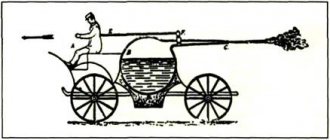- Basic properties of solids
- Types of solids
- Properties of amorphous solids
- Special properties of solids
- Plasticity and fragility
Solid bodies differ from other bodies in a number of characteristics and properties.
They all have similar characteristics. All these properties and characteristics are studied during the constantly improving cognitive process of the surrounding world. Physics has been studying solids throughout its entire existence as a science. Research, including those in which the properties of bodies are studied, is carried out at the micro and macro levels. The study of physical bodies, including the properties of solids, is one of the main issues of modern physics.
Basic properties of solids
Solids are characterized by: elasticity, plasticity and fragility.
Elasticity is the property of a body to return its shape to its original position after the cessation of external physical force. Examples include rubber.
Plasticity is a property that consists in consolidating the acquired form after the stop or cessation of external influence. This property does not restore its shape. Examples: plasticine, clay.
Fragility is the property of a body to collapse under small deformations. Examples: glass, porcelain.
Presentation “Mechanical properties of solids” presentation for a physics lesson (grade 10) on the topic
Slide 1
Mechanical properties of solids
Slide 2
Deformation is a change in the shape of a body or volume of a body under the influence of external forces.
Slide 3
Elastic, which completely disappear after the cessation of external forces. Plastic, which do not disappear after the cessation of external forces. According to the nature of deformation they are divided into:
Slide 4
Some types (Not all!) of deformations of solids: 1 – tensile deformation; 2 – shear deformation; 3 – deformation of all-round compression. There are several types of deformation:
Slide 5
Tensile deformation (compression) is a deformation during which a change in the linear dimensions of bodies occurs. Tensile deformation of cables, ropes, chains in lifting devices, ties between cars. Compressive deformation is experienced by pillars, columns, walls, and building foundations.
Slide 6
All beams in places of support, rivets and bolts, fastening parts, etc. are subject to shear deformation. Shift at large angles can lead to destruction of the body - shearing. The cut occurs during the operation of scissors, chisels, chisels, and saw teeth. Shear deformation is a deformation in which the layers of a body shift relative to each other.
Slide 7
Machine shafts, drills, and axles are subject to torsional deformation. Torsional deformation is a deformation in which individual layers of the body remain parallel, but are displaced relative to each other along a helical line.
Slide 8
Bending deformation is a deformation in which all layers of a body can be divided into three: one experiencing compression, one experiencing tension, and an undeformed (neutral) layer separating them. Crane beams, consoles, and load-bearing structures are subject to bending deformation. F control
Slide 9
Tensile diagram In practice, the most widely used method is testing a material for tension. As a result of such a test, a tensile diagram is drawn, the analysis of which allows one to determine the main characteristics of the mechanical properties of the material. The relative elongation ε is plotted along the abscissa axis, and the mechanical stress σ is plotted along the ordinate axis. The stress-strain diagram shows a typical example for metals (such as copper or soft iron).
Slide 10
σ ε 0 ° A σ p OA is the region of elastic deformations where Hooke’s law is satisfied. Elastic deformations completely disappear after unloading the test sample. The maximum stress σ = σ p, at which the deformation still remains elastic, is called the limit of proportionality (point A). Load application
Slide 11
σ ε 0 ° ° A B σ p σ exr. Increase in load Deformation becomes nonlinear, but after removing the load, the shape and dimensions of the body are practically restored - section AB The maximum stress σ = σ exr., at which noticeable residual deformations do not yet occur, is called the elastic limit. (point B).
Slide 12
σ ε 0 ° ° ° А С В σ p σ control σ t BC is the region of plastic (residual) deformations; the sample does not recover after removing the load. Increasing load
Slide 13
σ control σ ε 0 ° ° ° ° A D C B σ p σ t ε rest Section SD - deformation increases at a constant stress (material “flows”) The stress σ = σ t at which the material “flows” is called the yield strength. An increase in load εres – residual deformation – a change in the initial dimensions of the body when stress is removed in the area of plastic deformation.
Slide 14
Plastic materials are materials in which the yield area is significant and can withstand large deformations without destruction. (plasticine, copper, gold) Brittle materials are materials that have almost no yield area and can withstand only small deformations without destruction. (glass, brick, concrete, cast iron)
Slide 15
σ Increase in load ε 0 ° ° ° ° ° A D C B E σ p σ control σ t σ inc ε rest The maximum stress σ = σ inc that the sample can withstand without destruction is called the ultimate strength. (point E). After t. E, deformation up to rupture occurs at increasingly lower stress.
Slide 16
The safety factor (safety factor) is the ratio of the proportionality limit of a given material to the maximum stress that a structural part will experience in operation.
Types of solids
Depending on the degree of manifestation of certain properties, all solids can be divided into the following basic types:
- Amorphous
- With crystal structure
The vast variety of solids can essentially be thought of as an infinite number of molecular bonds. Without the use of the entire variety of solids with different properties and characteristics, it would be impossible to imagine the current level of development of science and technology. Many instruments and serious scientific equipment are created based on knowledge of the properties of solids, for example, a huge amount of electronic equipment uses semiconductors with their own unique properties and capabilities. We are talking about magnets, superconductors and other materials, without which such rapid development of science would be impossible.
Thus, solids are one of the most important subjects in the study of physics and one of the most important prerequisites for the prospects for the development of science. In particular, today scientists are interested in the properties of solids with a crystalline internal structure, which manifest themselves as a result of the interaction of particles.
The collective properties of electrons enable electrical conductivity of certain bodies; the type of collective vibration that occurs when heat is absorbed determines the degree of heat capacity. It has been determined that the thermal properties of solids are different: some solids are more likely to absorb heat and corresponding heating, and some are less likely to do so. Based on the data obtained, options are considered in which the control of the properties of solids is used for useful practical and scientific purposes.
The properties of crystalline solids imply the presence of a crystal lattice. In these bodies, the particles have a clear structure, clear periodicity and order of placement of structural units and constituent elements of the entire structure. The properties of an amorphous solid are completely different. They represent a huge amount of chaotic accumulation of atoms.
Another distinctive feature of a crystalline body is anisotropy. This characteristic of solid crystals assumes that the properties of the body depend on the direction inside the crystal.
The crystalline structure is inherent in all metals, which is why they are the best materials for construction. However, it is important to note that anisotropy does not appear all the time. In the normal state, this characteristic does not manifest itself in any way in metals. It turns out that in some cases a substance can be in an amorphous and crystalline state at the same time.
World of Science
We are convinced that the substance turns into a solid state then
, when the average kinetic energy of the translational motion of its molecules is significantly less than the depth of the potential well. In the same paragraph, we mentioned that solids can be crystalline or amorphous. Here we will consider only crystalline substances. When we say that the positions of atoms in a crystal are ordered, we mean that equilibrium points, centers around which chaotic vibrations of atoms occur, are located in a certain way. These points are called crystal lattice nodes. If the lattice nodes closest to each other are mentally connected by straight segments, we obtain a geometric body called the elementary cell of a crystal. Their shapes are quite varied, but they always have points, axes and planes of symmetry. A crystal, strictly speaking, consists of periodically repeating elementary cells. We don't often see a properly cut crystal, so it appears that most solids are not crystals. This is not true; crystals are found in both natural and artificially produced substances much more often than amorphous substances. Moreover, crystals never spontaneously transform into an amorphous state, but the reverse transition occurs quite often. The amorphous state, unlike the crystalline one, is unstable. Rarely do we come across not just crystals, but single crystals, bodies that are one fairly large crystal. Most often, crystalline bodies, including metals, are polycrystals, substances consisting of many small, often microscopic, randomly oriented crystals. The term "microscopic" in this case implies a macroscopic body, but so small that it can only be seen through a microscope. Single crystals are anisotropic, that is, they have different properties in different directions. This applies to any properties - mechanical, thermal, electrical, optical. Let's imagine that we are trying to compress a cubic crystal once along the edge of the cube, and another along the diagonal. From the simple fact that the distances between the atoms along each of these lines are different, it is obvious that with the same effort the results will be different. Everything that we will consider next, in principle, applies to both single crystals and polycrystals, although we will not take polycrystallinity into account in our discussions. You just need to keep in mind that in polycrystals the picture of all the phenomena under consideration becomes more complicated. It is not difficult to explain why an atom or ion located inside a crystal oscillates around a certain equilibrium position. It is difficult to explain why the crystal exists at all. At the nodes of the crystal lattice of the metal there are located, or more precisely, positive ions oscillate, and the electrons detached from the atoms are collectivized and belong to all the atoms, the entire crystal. From the point of view of classical physics, such a system simply cannot exist, because a system of free electric charges in the absence of external forces cannot be in equilibrium. But it exists! Quantum mechanics provides an explanation for this.
Properties of amorphous solids
Amorphous bodies are characterized by isotropy, which implies equal performance in all directions. Let's take glass and candy as an example. With sufficient external influences, these bodies will acquire a different shape and other characteristics.
The main properties of amorphous bodies include:
- Elasticity
- Fluidity
The elastic properties of solids are manifested in all solids, and fluidity is a sign of a liquid.
This characteristic of solids as elasticity manifests itself under short-term force effects. If you apply more force, they can break into particles. With intense and prolonged interaction, solids can exhibit fluidity.
Special properties of solids
- Anisotropy is one of the properties of a solid, which consists in the dependence of physical properties on the direction in the crystal.
- Isotropy – absence of dependence of a body’s properties on direction
- Polyformism is a special property that consists in the ability of solids to be in a state with a different crystal lattice. The property is inherent only in the solid state of matter.
Molecules and atoms of amorphous bodies are susceptible to vibrations, but insignificant compared to liquids, therefore, in terms of their internal properties, they can be equated to crystalline ones.
Their atoms are not in a constant process of rearrangement from one position to another, therefore their state of equilibrium is characterized as unchanged. Amorphous bodies in a state of low temperature correspond to the properties of solid bodies. As the temperature rises, the bonds at the molecular level change, and the bodies begin to resemble liquid in their properties.
Amorphous bodies are simultaneously similar to crystalline, solid, and liquid bodies. The particles are located in a certain order, which allows you to create materials, substances, objects with given and expected properties. Physics considers the controlled properties of solids as one of the most basic areas of practically oriented study of what general properties solids have and how to control these properties.
Mechanical stress
1. As you already know, deformations occur in various parts of machines and mechanisms, parts of structures under the influence of force. Under certain deformations, structural failure may occur. Therefore, there is a need to study the mechanical properties of various materials and solids. In this case, it is necessary first of all to answer the questions: how does the length of a body change when various forces act on it, what is the maximum load the body can withstand without collapsing, under what load the body loses its elastic properties, etc. The mechanical properties of bodies and substances are studied experimentally . Let's consider some properties of solids and their physical characteristics.
We will stretch a body, for example a metal rod with cross-sectional area S, acting on it with a force F (Fig. 120). In this case, an elastic force will arise in the rod and it will be in a state of tension. This state of a deformed body is characterized by a quantity called mechanical stress .
| Mechanical stress o is a physical quantity equal to the ratio of the force F that acts on a body to its cross-sectional area S. |
The SI unit of mechanical stress is the pascal (Pa)
.
- 1 Pa= 1 N/m2.
Plasticity and fragility
There are a number of materials that undergo deformation under slight external influence. This is the property of plasticity that distinguishes amorphous solids.
Another group of materials are materials that can collapse with minor impact. This property of fragility, in practice it turns out to be more in demand than elasticity and plasticity. One of the most fragile materials is porcelain. We know what will happen to a porcelain object if it is dropped from a height.
The same material is conditionally capable of acquiring elasticity or plasticity depending on the stresses that arise. Different materials have their own tensile strength: under a certain load, the material breaks. In this case, they say that the voltage at this moment has reached its maximum value. This value depends on the material and the quality of its processing.




